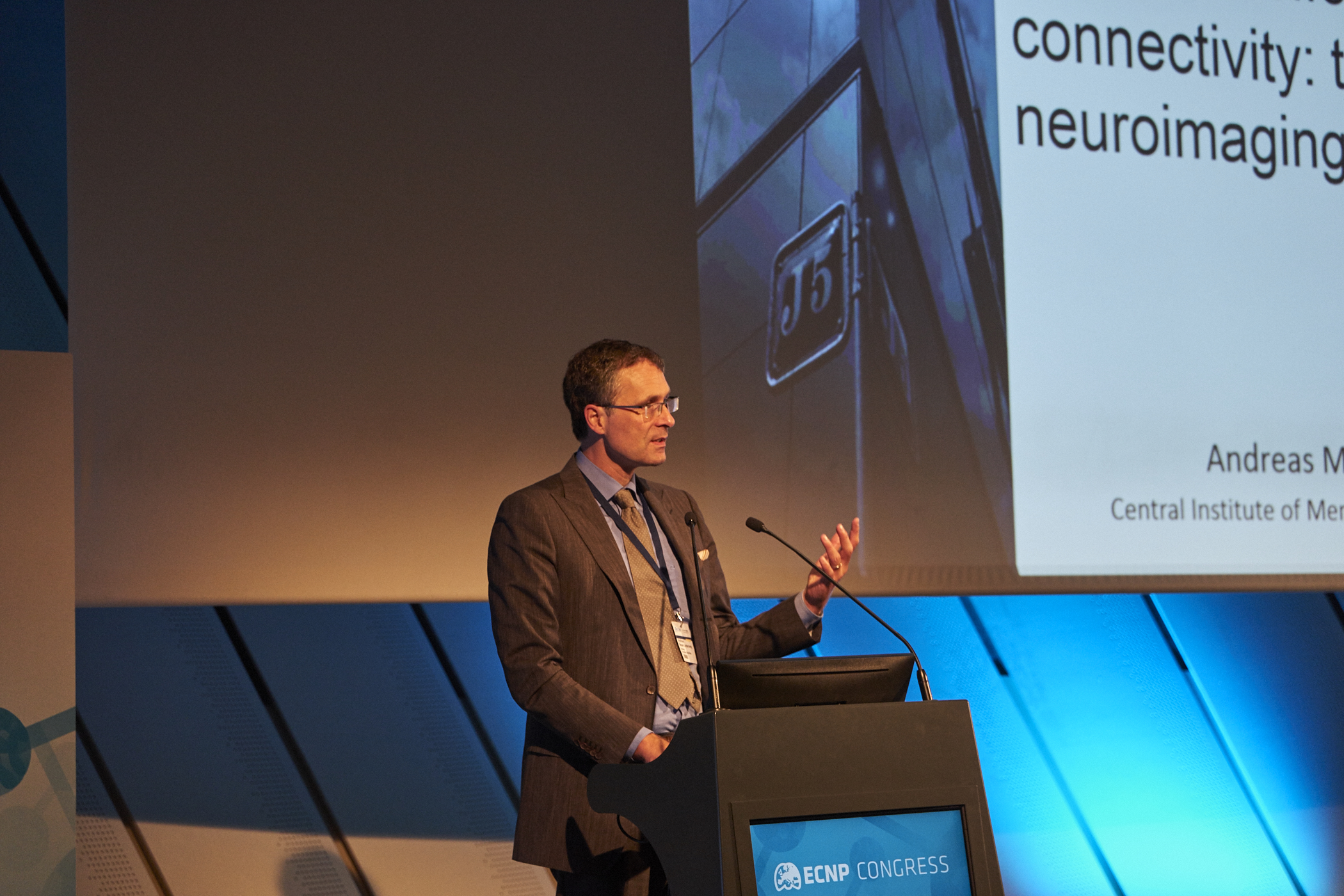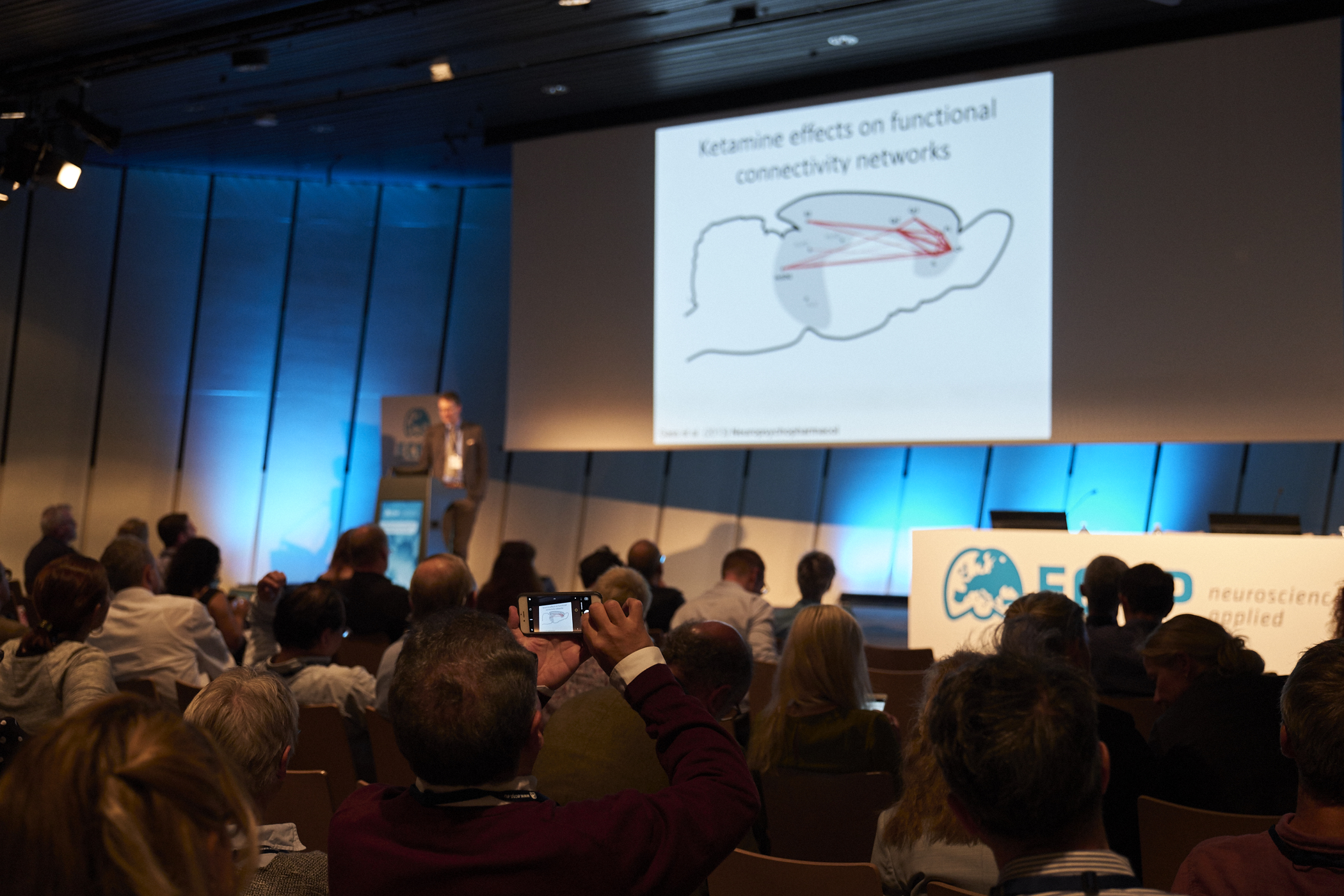There has been an explosion of interest in research on brain connectivity, across disorders in psychiatry. In this symposium, both structural and functional connectivity in psychotic disorders were discussed, along with some pointers for translational research.
Structural connectivity in the brain has been primarily examined using diffusion tensor imaging (DTI), primarily through the measurement of fractional anisotropy (FA), explained Prof Machteld Marcelis from The Netherlands. In individuals with psychosis compared with healthy volunteers, DTI has illustrated the reduced strength of white matter connections in fronto-temporal regions, particularly in the corpus callosum and the cingulate gyrus for those with psychosis. This represents an increase in diffusivity, possibly as a result of reduced myelination and less organised orientation of nerve fibres in patients with psychosis.
These effects were investigated further in a 2-year longitudinal study. This study sought to examine the interaction between genetic and environmental risk factors (cannabis use and childhood trauma) in patients with schizophrenia and their family members. The study found that both environmental and genetic risk factors had some effect in reducing connectivity. Such an association was not found for healthy volunteers and siblings of the patients. This might indicate that cannabis and childhood trauma compromise brain connectivity in individuals who already have a higher than average genetic vulnerability for schizophrenia, but not in those who do not have an increased genetic vulnerability.
Risk factors for schizophrenia were found to compromise brain connectivity in patients, but not in their siblings or healthy volunteers
Prof Esther Opmeer from The Netherlands discussed the results of research on functional brain connectivity, using fMRI, in patients with schizophrenia and those with bipolar disorder with psychosis. She pointed out that these two disorders can sometimes be difficult to distinguish in the clinic, and patients have some difficulties in emotional processing and social interactions in common.
In a self-evaluation task, the posterior cingulate cortex (PCC) showed reduced activation in both bipolar disorder and schizophrenia, possibly reflecting the problems in autobiographical memory that many patients experience. In addition, connectivity between the insula and the PCC increased in healthy controls when they were thinking of people they were close to, whereas this decreased under the same conditions in patients with schizophrenia. Prof Opmeer speculated that this might reflect a deficit in processing the emotional value of information in many people with schizophrenia, and may help to explain problems with social interactions often encountered in schizophrenia.
A task designed to assess conscious emotional self-regulation showed that the usual top-down regulation of the amygdala by the dorsolateral prefrontal cortex (DLPFC) was not seen in patients with bipolar disorder. This, however, has not yet been investigated in patients with schizophrenia. However, activation of the ventro-lateral PFC during conscious emotional regulation was not sustained for as long in patients with schizophrenia as it was in healthy controls. Patients with bipolar disorder showed little activation of the VLPFC compared with the other two groups, indicating that this group of patients did not recognise the salience of the stimuli and the need for emotional self-regulation.
These results demonstrated that there are some commonalities between the symptomatology of schizophrenia and bipolar disorder. However, functional connectivity shows different underlying mechanisms for these problems in the two disorders.
Prof Oliver Howes from the UK revisited the dopamine hypothesis of schizophrenia, in light of recent scanning studies. He discussed the conventional wisdom on the pathophysiology of schizophrenia, specifically the involvement of the mesolimbic dopaminergic pathway. His group found that in schizophrenia, it is the associative part of the dorsal striatum, rather than the ventral striatum, that shows the greatest elevation in connectivity. These associative areas of the dorsal striatum show strong links with the DLPFC. Therefore, he asked, is this connection altered or disturbed in schizophrenia, implicating areas of the frontal cortex in the pathophysiology of schizophrenia?
Is the connectivity between dorsal striatum and frontal cortex implicated in the pathophysiology of schizophrenia?
These findings have implications for treatment, as the level of connectivity between the striatum and frontal regions in schizophrenia predicts the size of response to treatment. Current second-generation antipsychotics, however, have shown limited to no effect on dopamine synthesis abnormalities in the striatum in drug-naive patients with schizophrenia. Drugs that target processes upstream of this change in the striatum would be useful since projections from the frontal cortex to the association striatum have been shown to be dysregulated in schizophrenia. As such, the frontal cortex may be a potentially efficacious target for drug therapies.
Prof Andreas Meyer-Lindenberg from Germany introduced some trans-species models of brain functional connectivity that may lead to translational research. This is a difficult research area, in which animal behavioural models for many symptoms of psychiatric disease, including schizophrenia, are not available, and more accurate animal models are needed. He demonstrated that connectivity between certain brain regions, such as between the hippocampus and PFC, are highly conserved between species. This may be because networks such as these, which are critical in working memory, have been evolved to optimise flexible brain operation, and therefore maintained from species to species. This means that it may be possible to identify brain regions and networks of interest, and use activity and changes in connectivity of these areas as markers of drug action in preclinical models.






